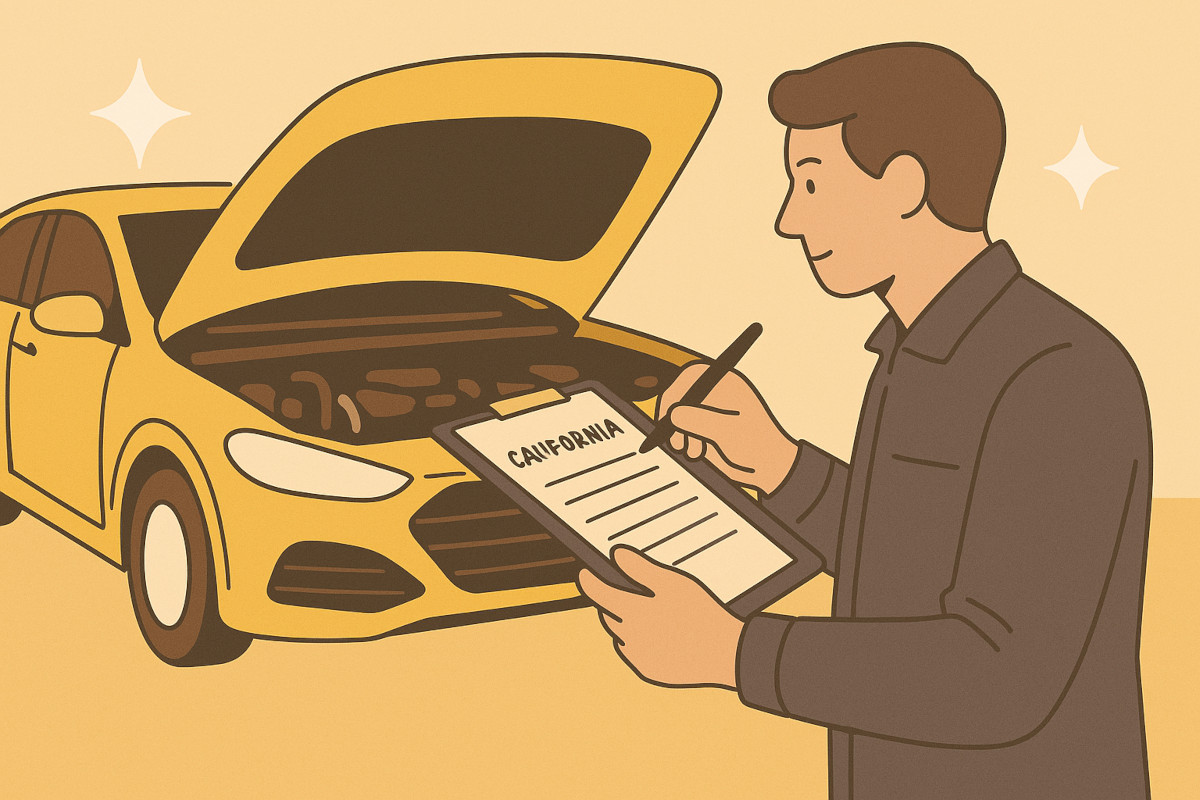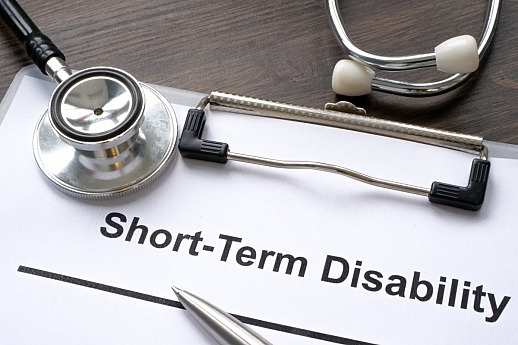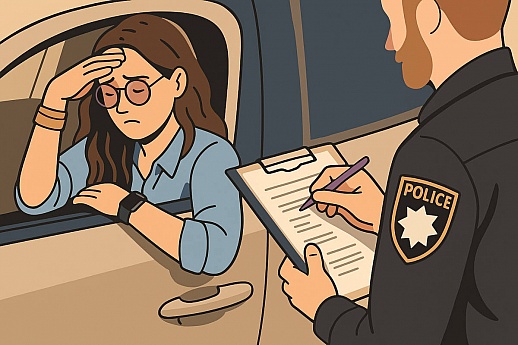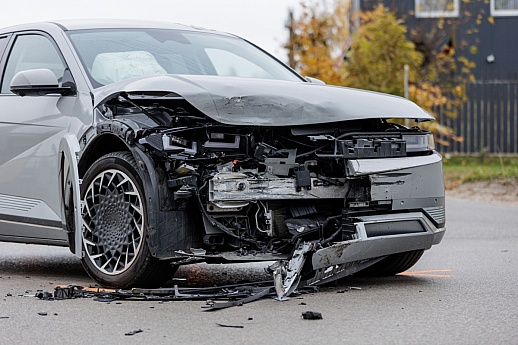Why Car Insurance Rates Are Rising in California — and How To Save
You’ve always been a responsible driver — no accidents, no tickets. But when the renewal notice arrives, the amount hits you like a gut punch. Your premium has soared, leaving you wondering what went wrong.
Across California, countless drivers share this frustration, watching their rates climb with no clear explanation. Why is car insurance so expensive in California?
The answer is not simple. Let us uncover the forces driving car insurance rates higher and explore smart ways to stay covered without breaking the bank in a place where driving less can mean paying more.
The Rising Cost of Car Insurance in California: A Snapshot
Why is car insurance so expensive in California? Before we answer this question, let’s first look at the numbers.

In January 2021, the average annual cost of full-coverage auto insurance in both California and the U.S. was around $1,500. By 2024, the national average climbed to $2,315, while California’s hit $2,536.
A big part of that jump happened in just six months. Between December 2023 and June 2024, the average car insurance cost in California skyrocketed from $1,738 to $2,417. This marks a nearly 40% increase in just six months.
Looking ahead, Bankrate predicts a nationwide average increase of 7% in personal auto insurance rates in 2025, with some insurers planning additional premium hikes.
Economic Factors Driving High Car Insurance Rates in California
California’s soaring car insurance rates aren’t just numbers on a bill — they reflect a web of economic pressures. From inflation to expensive repairs, every rising cost pushes premiums even higher. Let us dig deeper into these factors below:
1. Inflation and Rising Costs
Inflation has been steadily pushing the cost of goods and services, including car repairs and medical bills.
According to recent Consumer Price Index (CPI) data from the U.S. Bureau of Labor Statistics (BLS), the annual inflation rate for all consumer spending categories in the Los Angeles, California area alone has reached 3.1%, surpassing the national average of 2.8%.
As a result, insurance companies have to adjust their rates to keep up with such rising costs.
2. Expensive Car Repairs
California, Connecticut, and Colorado have some of the highest vehicle repair costs in the U.S. The average total repair cost in the state is $415.66, with labor at $144.56 and parts at $271.10. So, if you’re wondering why California car insurance rates are expensive, rising repair costs have led to higher premiums.
Additionally, electric vehicles (EVs) make repair and insurance even more expensive, as they are usually costly to repair or replace after an accident due to their advanced technology and specialized components. In 2023, California had the highest - over 1.2 million light-duty EV registrations.
3. Higher Costs of Living
The state's high cost of living partly answers the question on why is car insurance so expensive in California? World Population Review reported that California ranks third in the nation with a cost of living index of 144.8 and healthcare costs at 107.7.
Over the last 20 years, healthcare spending has increased by about 5.4% annually. Since medical expenses impact accident claims, rising healthcare costs contribute to higher bodily injury liability coverage premiums.
The Role of Insurance Companies in Rising Costs
People may blame insurance providers for rising car insurance costs in California. While these companies raise rates to make profits, factors beyond their control can push them to do so to avoid financial instability.
1. Frequency and Severity of Accidents
Insurers consider the frequency and severity of accidents when deciding whether to raise auto insurance premiums and how much. For example, during the COVID-19 pandemic, even with fewer cars on the road due to lockdowns, some drivers engaged in risky behaviors like driving under the influence (DUI) or driving while intoxicated (DWI).
In California, DUI is the legal term for driving while impaired by alcohol or drugs. It's important to understand the difference between DWI and DUI, as some states use DWI to refer to more severe offenses.
Despite reduced traffic, California saw increased traffic fatalities and auto claims with physical damage losses compared to the start of the pandemic. Consequently, insurance companies had to raise premiums to cover the rising cost of accident-related claims. This provides an answer to the question: Why did car insurance go up in California?
2. Reinsurance Rates
Reinsurance protects insurance companies by sharing financial risks from disasters like wildfires and hurricanes. Large global and national reinsurers absorb some of these risks to ensure insurers stay financially stable when faced with massive claims or supply chain disruptions.
However, reinsurers have suffered heavy losses from recent disasters, cutting their profits. To recover, they have raised their rates. In 2023, U.S. property catastrophe reinsurance rates surged by up to 50%, especially in states like California and Florida, where wildfires and hurricanes are more frequent.
Why is car insurance so expensive in California? When reinsurance costs rise, insurers pass some of these expenses on to policyholders, leading to higher premiums.
3. State Regulations
State regulations constantly evolve, which requires insurers to adjust coverage and pricing.
Since driving without car insurance is illegal in almost all U.S. states, California requires motorists to carry at least liability insurance to cover damages they may cause to others.
Effective January 2025, Senate Bill 1107 has increased the state's minimum liability limits as follows:
- Bodily injury liability per person: From $15,000 to $30,000
- Bodily injury liability for every one per accident: From $30,000 to $60,000
- Property damage liability per accident: From $5,000 to $15,000
These updates aim to provide stronger financial protection for Californians involved in motor vehicle accidents but may result in higher insurance costs.This is another reason why California car insurance increase is necessary - higher coverage limits mean insurers take on more risk and cover higher payouts. This can result in potential premium hikes.
The California Car Insurance Crisis: What’s Happening?
If you’re still wondering why is car insurance so expensive in California? The answer is that car insurance rates are skyrocketing everywhere, but California's situation has become worse and more complicated.
Rising costs, environmental pressures, and regulatory changes have thrown California’s auto insurance market into turmoil. Drivers now wait longer to get coverage, and when they do, they must pay premiums upfront.
Some of the largest insurance companies have already pulled back. Others, like Allstate and State Farm, have stopped accepting new car insurance policies in certain areas due to financial risk.
This crisis has been unfolding for years. The 2018 Camp Fire caused $16.5 billion in damage, leading to massive insurance losses. In 2019, insurers avoided renewing over 210,000 policies.
In response, the government barred companies from canceling or non-renewing policies in wildfire-prone areas, but some insurers didn’t want to take the risk. They refused to get new clients or shift business to other states.
The COVID-19 pandemic made things worse. The government froze premium hikes and ordered insurers to issue refunds. After the pandemic, insurers found it urgent to raise premiums, blaming higher claim costs and inflation.
With some of the best auto insurance companies pulling out and premiums rising, finding affordable coverage has become increasingly difficult. The crisis continues, and drivers face an uncertain road ahead.
Why Are Insurance Companies Pulling Out of California?
When major insurers leave, others follow, creating a domino effect. The companies withdrawing from California share the same reasons, such as:
Financial Losses From Wildfires
Escalating wildfires in California make it harder for insurance companies to stay in business.
According to the California Department of Insurance (CDI), the January 2025 Palisades and Eaton fires alone resulted in $6.9 billion in payouts, including 5,597 auto insurance claims totaling $73 million.
With disasters like these becoming more frequent, insurance companies face significant financial losses, and so they have to rethink their presence in disaster-prone and high-risk areas.
When claims consistently exceed collected premiums, insurers face a harsh reality. Many raise rates, reduce coverage, or leave the market altogether. As more companies withdraw, people are left with fewer options, which makes it harder to secure affordable coverage.
Regulatory Obstacles
California’s strict insurance laws, especially Proposition 103, add layers of complexity to an already difficult landscape. Enacted in 1988, this law mandated companies to justify rate increases and obtain approval from the CDI. If a proposed hike exceeds 7% and a consumer challenges it, hearings are required, which can drag on for years.
While intended to shield consumers from unfair rate increases, Proposition 103 hampers insurers’ ability to respond quickly to market conditions, making it difficult for them to recoup costs. Moreover, many criticize the rate approval process, which can take over a year due to red tape.
Is GEICO Leaving California?
GEICO, one of the largest casualty and property insurance providers in California, hasn’t left the state, but it has dramatically changed how it does business. In 2022, the company shut down all 38 of its agent offices and ended insurance sales through phone agents.
Now, if you want GEICO coverage, you’ll have to buy and manage your policy through their website or mobile app. GEICO hasn’t released an official statement explaining the reason behind these actions — whether it’s a strategic move to limit business operations or a response to financial losses.
How To Save Money on Car Insurance in California
California’s soaring auto insurance costs have become a heavy burden for drivers. However, with determination and resilience, they can navigate these challenges. Consider these strategies to handle insurance costs in California effectively:
- Conduct Research
To save on car insurance, compare quotes from different providers. Each company calculates rates differently, so shopping around helps you find the most affordable option while ensuring you get the best coverage for your needs.
- Opt for Higher Deductible
A higher deductible lowers your premium but increases out-of-pocket costs after a claim. Pick an amount you can afford to avoid financial stress if an accident happens.
- Maintain a Clean Driving Record
Lower premiums come with safe driving habits. So, follow traffic laws to prevent violations and accidents. Check car blind spots, avoid distractions, and be cautious when driving at night. Insurance providers will offer you lower rates when you maintain a clean driving record.
- Leverage Discounts
Ask about potential discounts you might be eligible for. Insurance companies often provide discounts for long-term customers, those who install anti-theft systems, or drivers who complete defensive driving courses.
Final Thoughts
Wildfires have devoured homes and livelihoods, but they’ve also torched insurers’ bottom lines. With billions lost to disasters, rising costs, and fatal crashes, California’s car insurance industry is buckling under pressure. Lawmakers struggle to find balance, yet drivers bear the burden of soaring premiums.
So instead of just asking, Why is car insurance so expensive in California?, it's time to ask, What’s next? Like rebuilding fire-scorched towns, the industry must find a way forward. Change is on the horizon, and with it, the promise of a future where car insurance in the Golden State is both accessible and affordable.
FAQs
These frequently asked questions provide you with more insights into California's auto insurance costs:
Why Are Car Insurance Rates So High in California?
The rising costs of living and car repairs, combined with inflation, increasing reinsurance expenses, frequent and severe wildfires and accidents, and regulatory changes, have all driven insurance rates in California to exceptionally high levels.
What’s Going On With Car Insurance in California?
California drivers face delayed quotes, higher premiums, and questionable insurer practices. Finding affordable coverage is harder than ever as insurers drop customers or exit the state due to skyrocketing costs of claims, rising prices of goods and services, and restrictive government requirements.
How Much Is the Average Car Insurance Per Month in California?
Taking into account the common types of car insurance policies, the average monthly premium in California is $72 for minimum or liability-only coverage and $248 for full coverage.
Is $200 a Month a Lot for Car Insurance?
It depends on whether it’s for minimum or full coverage. While $200 is below the national average of $223 for full coverage, it is too high for minimum coverage, which averages $67 per month.
What Is the Cheapest Car Insurance Company in California?
Wawanesa General offers the lowest average annual car insurance rate in California at $1,214 for drivers with a clean record. After an accident, USAA is the best option, with an average rate of $2,086 per year.



